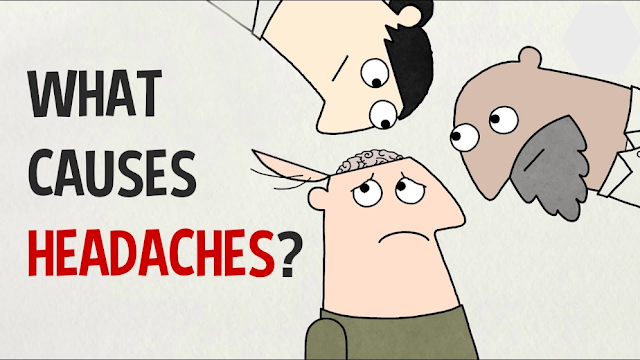Headaches were regarded as serious diseases in ancient Greece. Asclepius, the god of medicine was prayed for relief by the victims. If the agony persisted, a doctor would provide the most well-known treatment, making a tiny hole in the skull to drain purportedly diseased blood. Trepanation is a terrible practise that frequently caused a more worse ailment to take the place of the headache.
Thankfully, modern medicine does not use power tools to treat headaches. But there is still a lot we don’t know about this old disease.
We have divided headaches into two categories today:
1. Primary headaches.
2. Secondary headache.
The former is the condition:
It is not a sign of an illness, injury, or other condition that exists beneath it. Although primary headaches account for 50% of reported instances, we actually know far more about secondary headaches, so we’ll get back to them in a moment. These are brought on by other medical conditions, with causes ranging from heart disease and dehydration to coffee withdrawal and head and neck injuries.
More than 150 diagnosable varieties have been categorised by doctors:
Each has a variety of potential origins, symptoms, and treatments. But let’s use one typical instance, a sinus infection, as an illustration. The system of cavities known as the sinuses extends behind our foreheads, noses, and upper cheeks. Our immune system reacts to an infection in our sinuses by heating the area, roasting the bacteria and enlarging the cavities well beyond their normal size. The neck and head muscles, as well as the cranial arteries and veins, are compressed by the expanded sinuses. Their nociceptors, or pain receptors, activate in reaction, prompting the brain to emit a barrage of neuropeptides that enlarge and heat up the head by inflaming the cranial blood vessels. The uncomfortable feeling that results from a headache is brought on by sensitive head muscles.
Not all headache discomfort is caused by swelling. Every headache is uncomfortable to a different extent because of tense muscles and inflamed, sensitive nerves. However, every occurrence is a response to a cranial irritation. Secondary headaches have a known cause but primary headaches don’t have a known cause. The three principal types of headaches recurrent, protracted migraines; excruciatingly painful, rapid-fire cluster headaches; most frequently, tension headaches remain the subject of ongoing scientific research.
Tension headaches, as the name implies, are characterised by a feeling of a tight band being squeezed around the head. The peri cranial muscles become more sensitive as a result of these headaches, and they subsequently painfully pulse with blood and oxygen. Stress, dehydration, and hormonal changes are cited as triggers by patients, however these don’t fully fit the symptoms. For instance, the frontal lobe actually shrinks away from the skull in migraines caused by dehydration, resulting in forehead swelling that doesn’t correspond to the site of the pain in headaches caused by tension.
No one is certain of the exact cause, although suggestions put forth by scientists range from extremely sensitive nociceptors to spasming blood vessels. The majority of headache research, however, focuses on primary headaches that are more severe. Recurrent headaches called migraines can feel like a clamp on the skull for anywhere between four hours and three days. 20% of the time, these episodes are severe enough to overwhelm the brain with electrical energy, which causes sensory nerve endings to become overexcited. Auras, which are hallucinations caused by this, include seeing flashing lights and geometric patterns as well as feeling tingly. Another common type of headache is a cluster headache, which causes stabbing, stabbing pain behind one eye, resulting in a red eye, a constricted pupil and a drooping eyelid.
What can be done to address these issues, which have a significant impact on the quality of life for many people?
Anti-inflammatory drugs that lessen cerebral edoema can be used to treat tension headaches and the majority of subsequent instances. Dehydration, eye strain, and tension are just a few of the secondary headache factors that can be proactively avoided. The causes of migraines and cluster headaches are more complex, there are currently no effective and universal treatments available. But happily, pharmacologists and neurologists are working diligently to solve these urgent puzzles that consume our thoughts.
Related Searches:
what causes headaches everyday, when to worry about a headache, i’ve had a headache for 3 days, severe headache meaning, continuous headache for days, sudden severe headache, causes of tension headache, types of headache.
